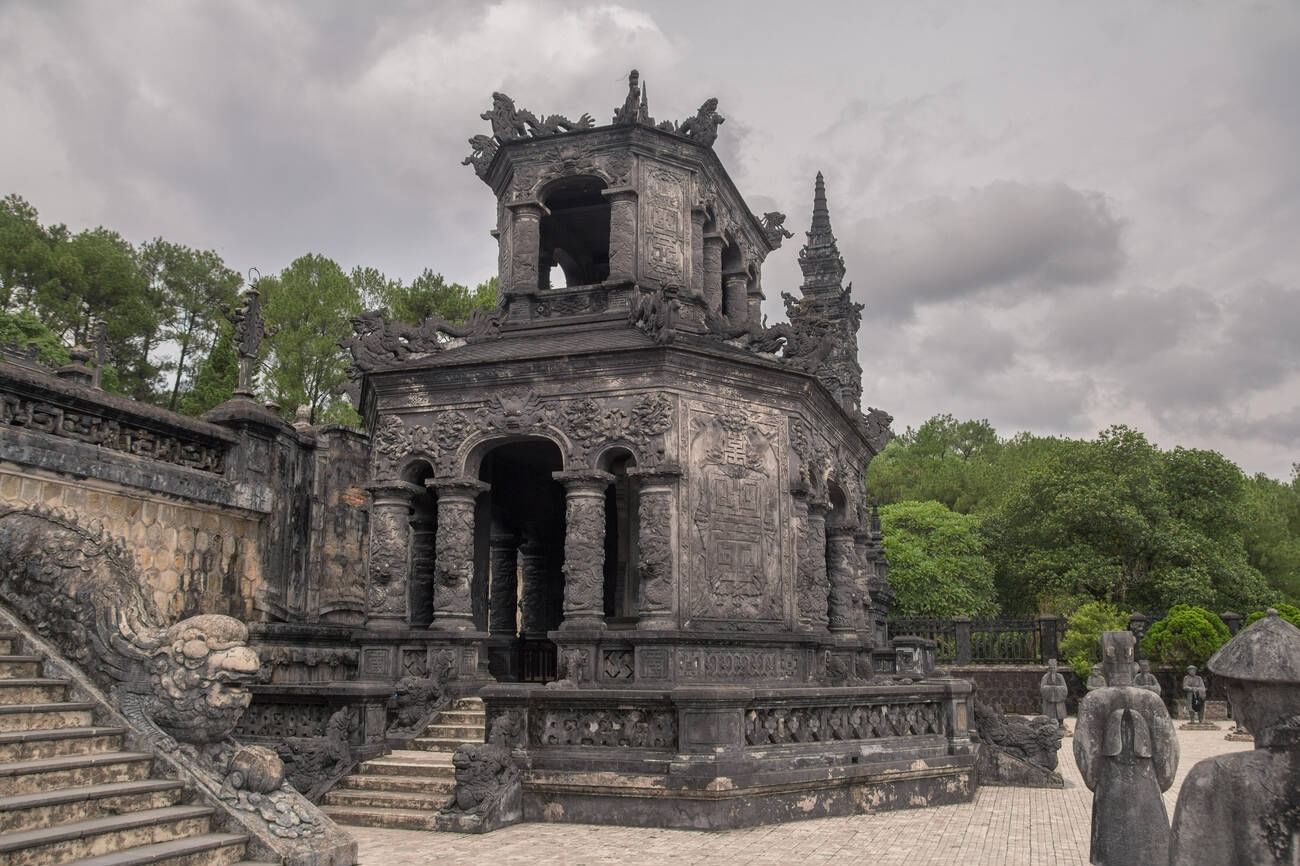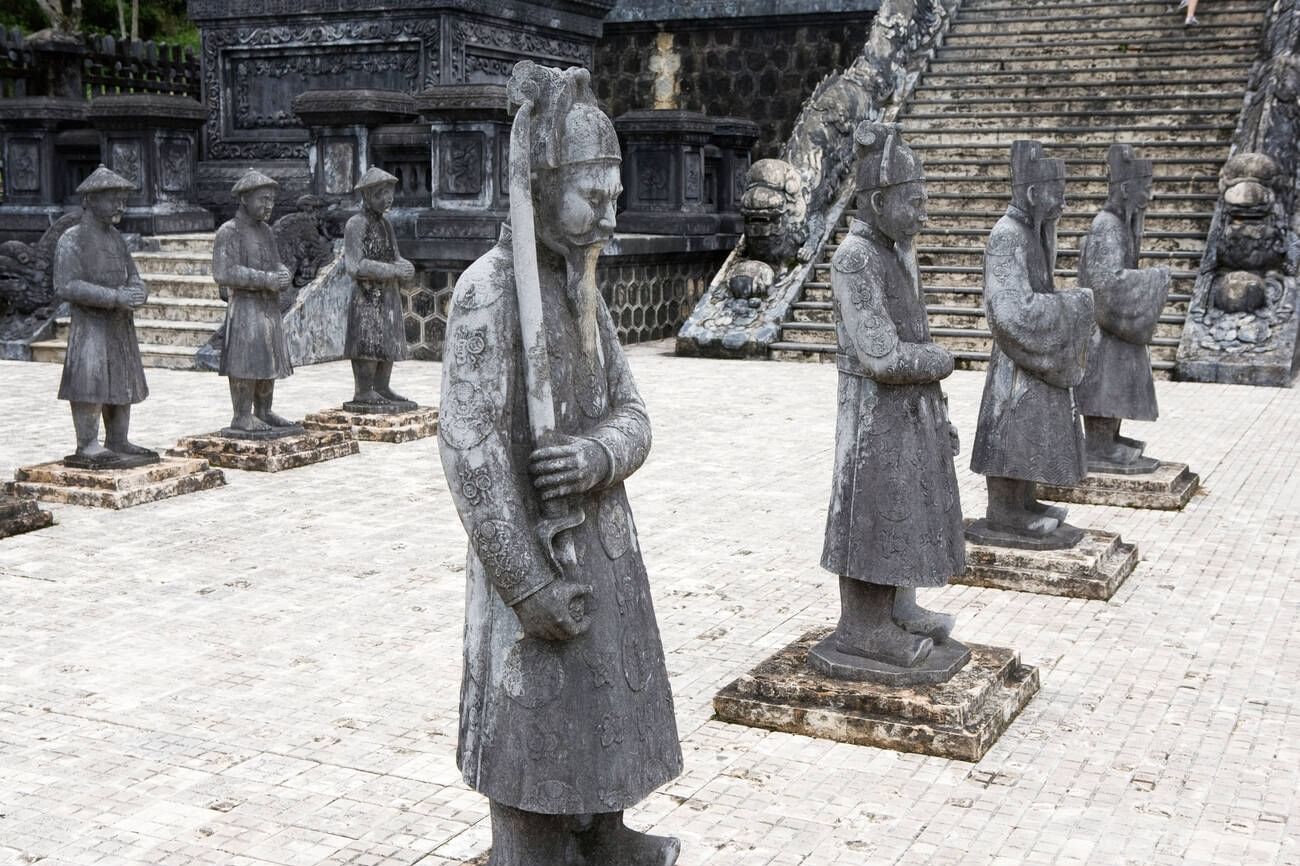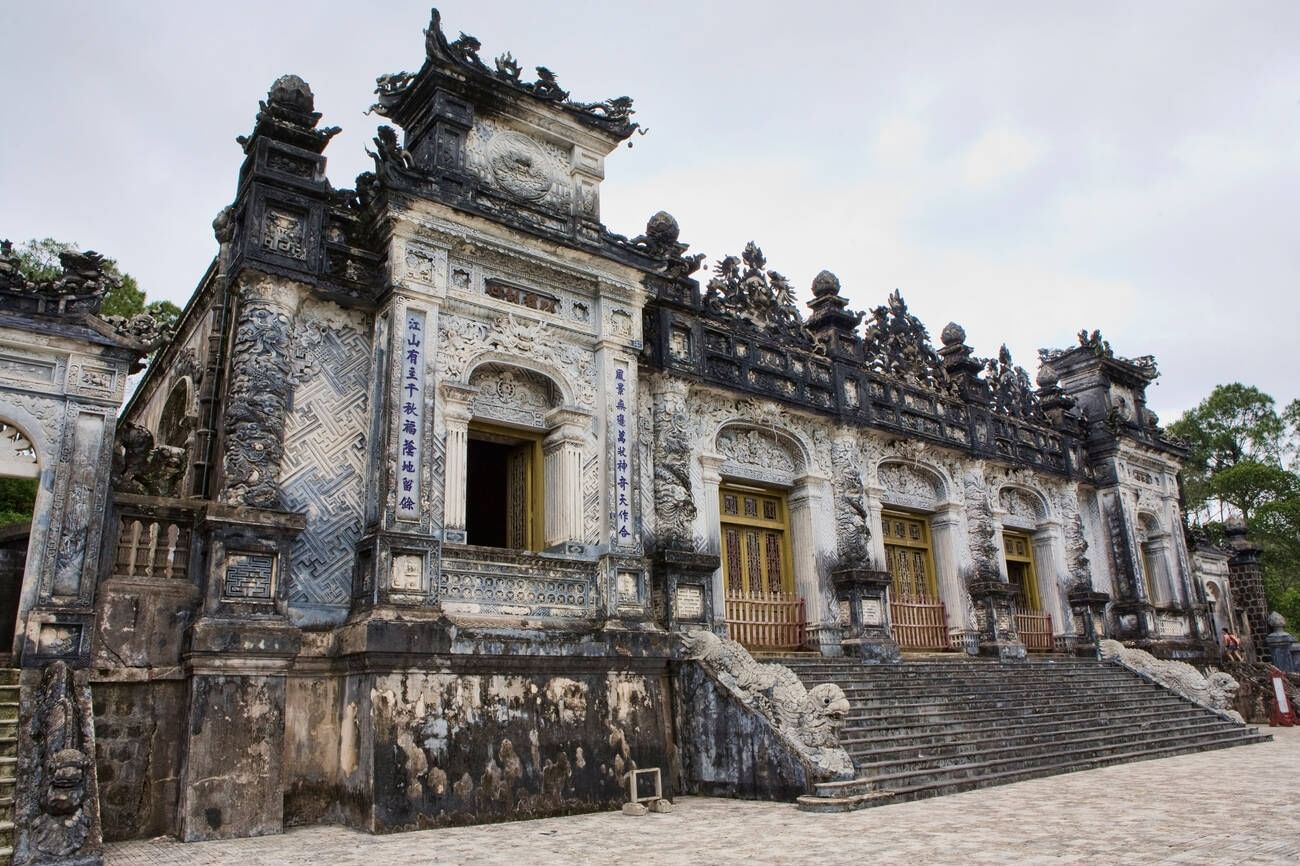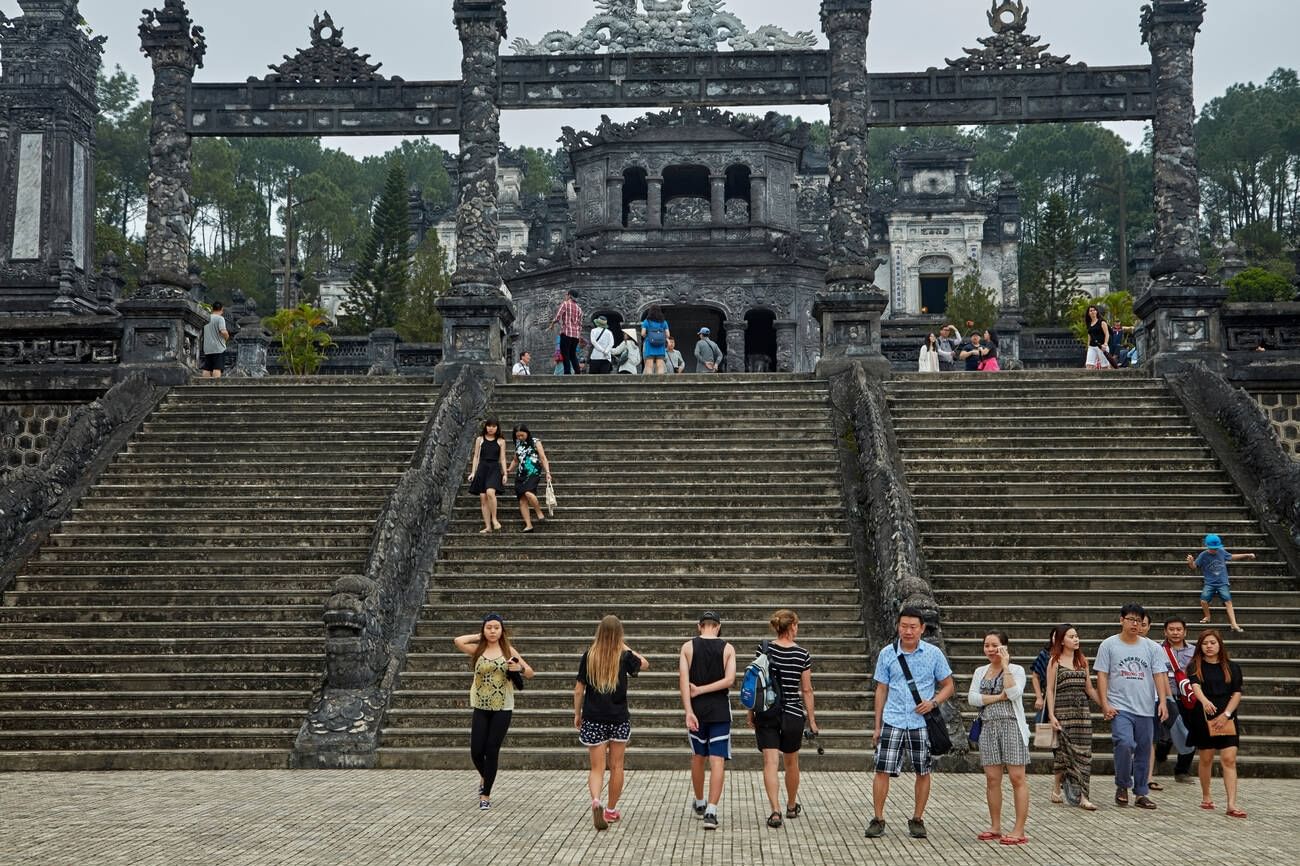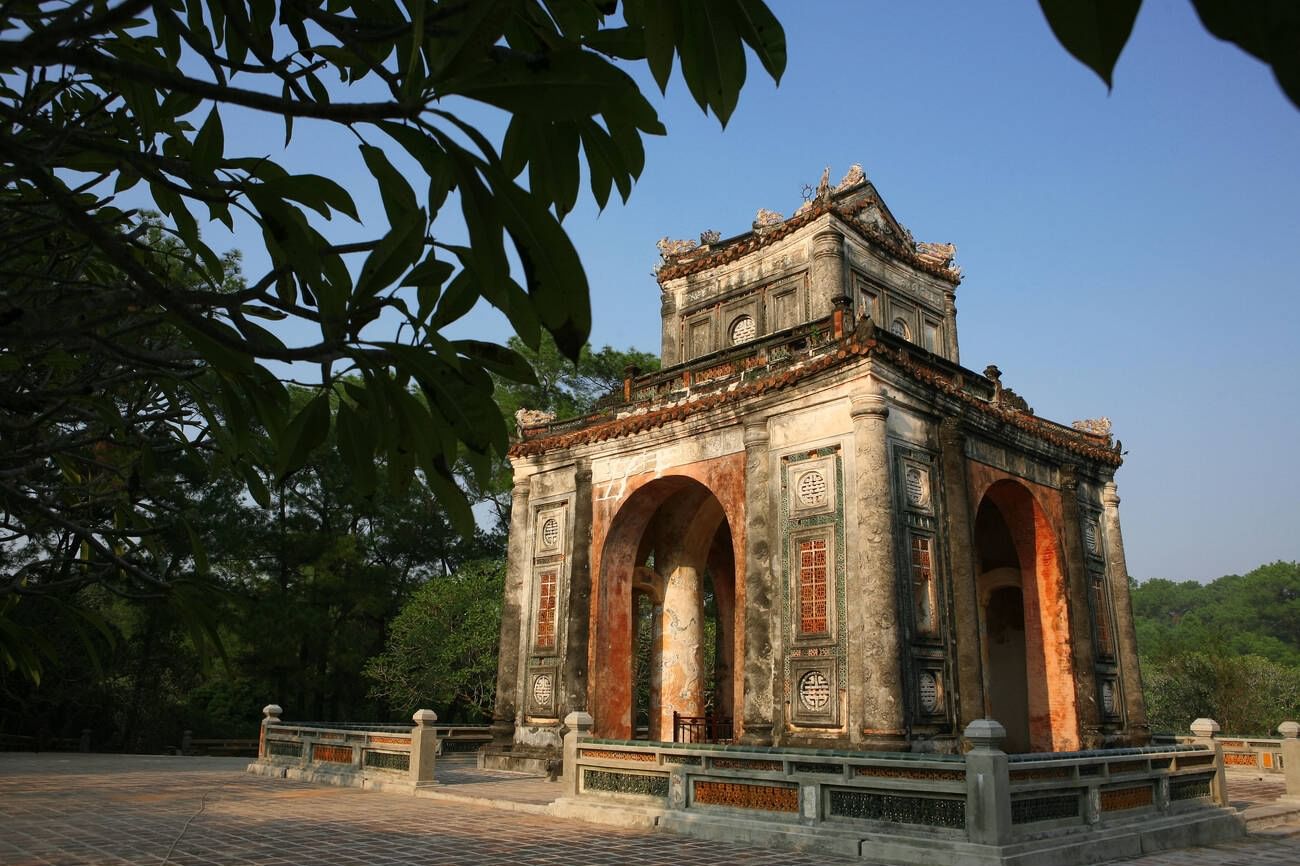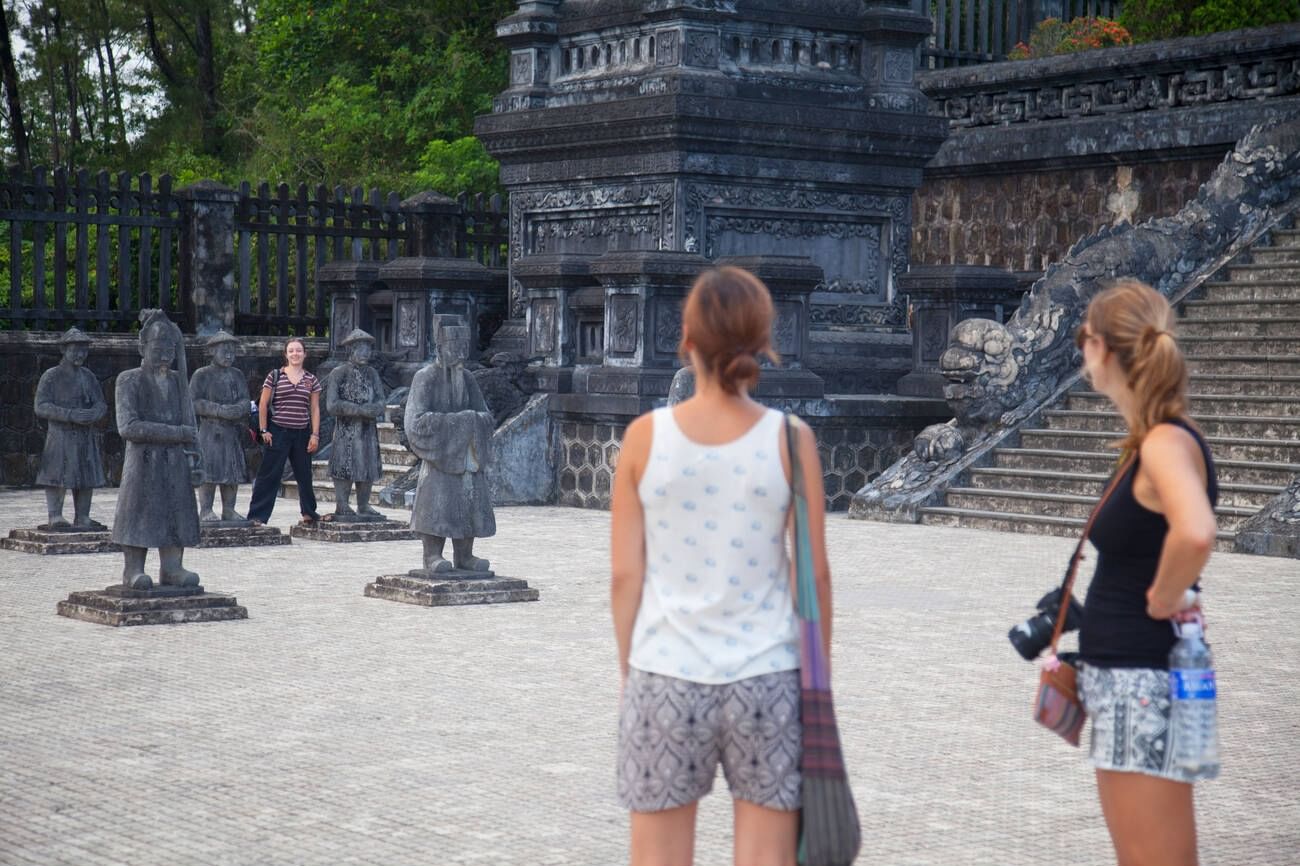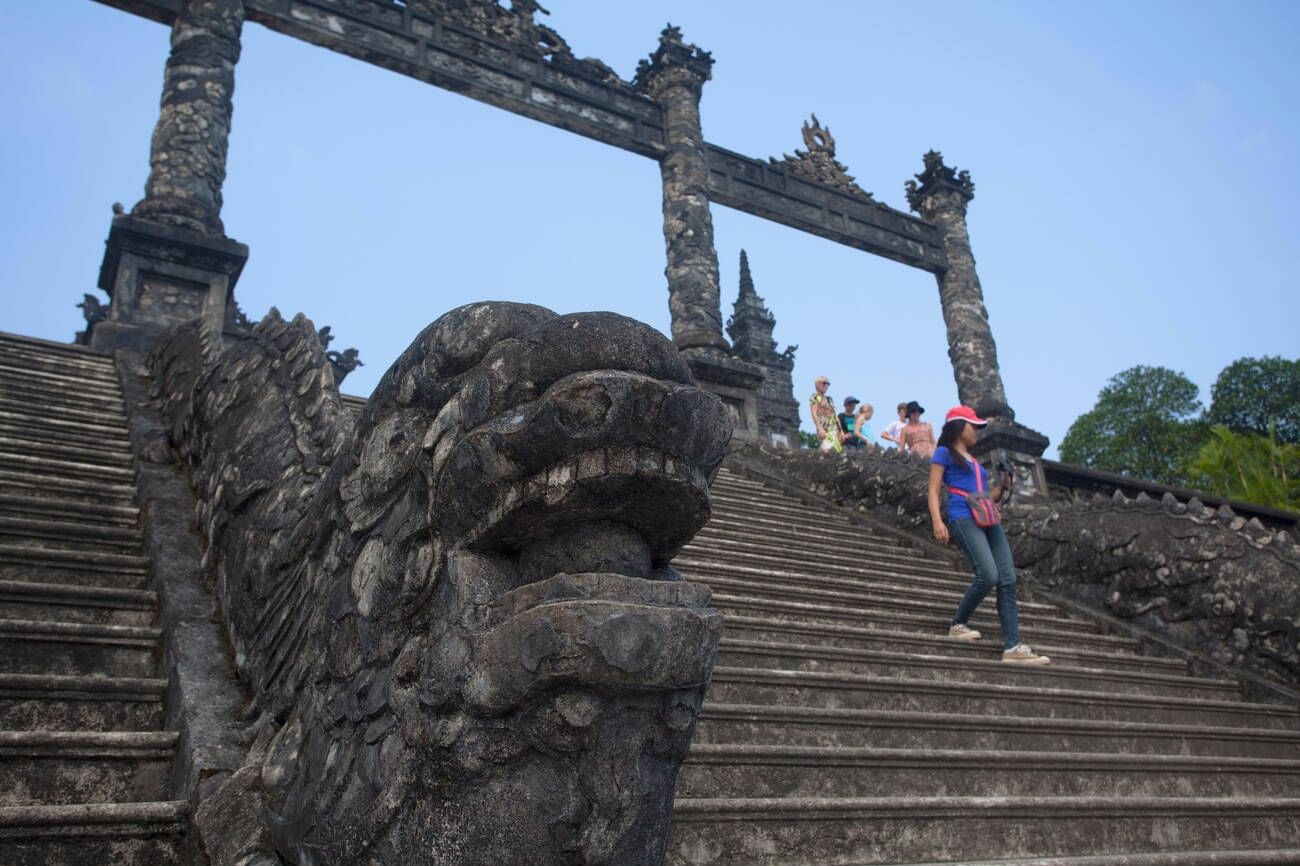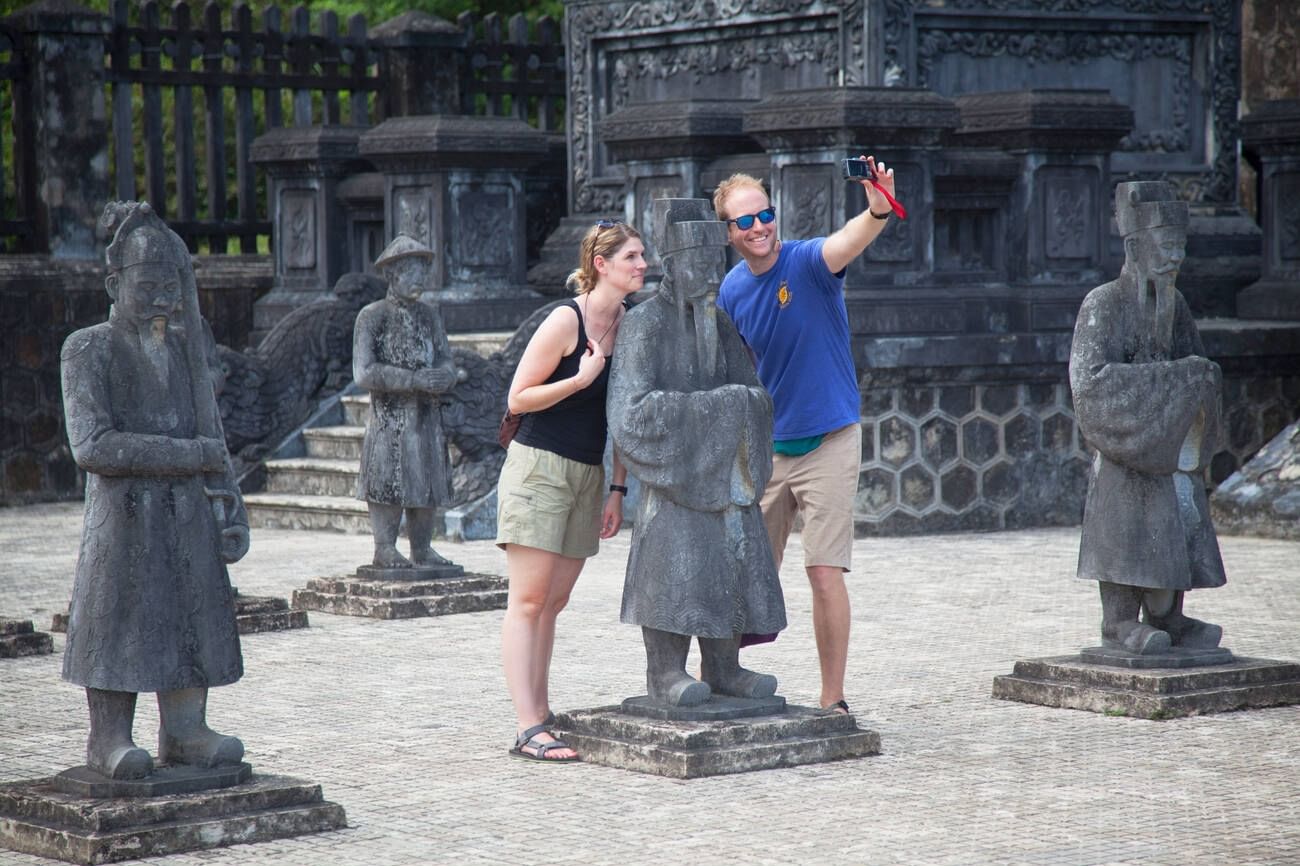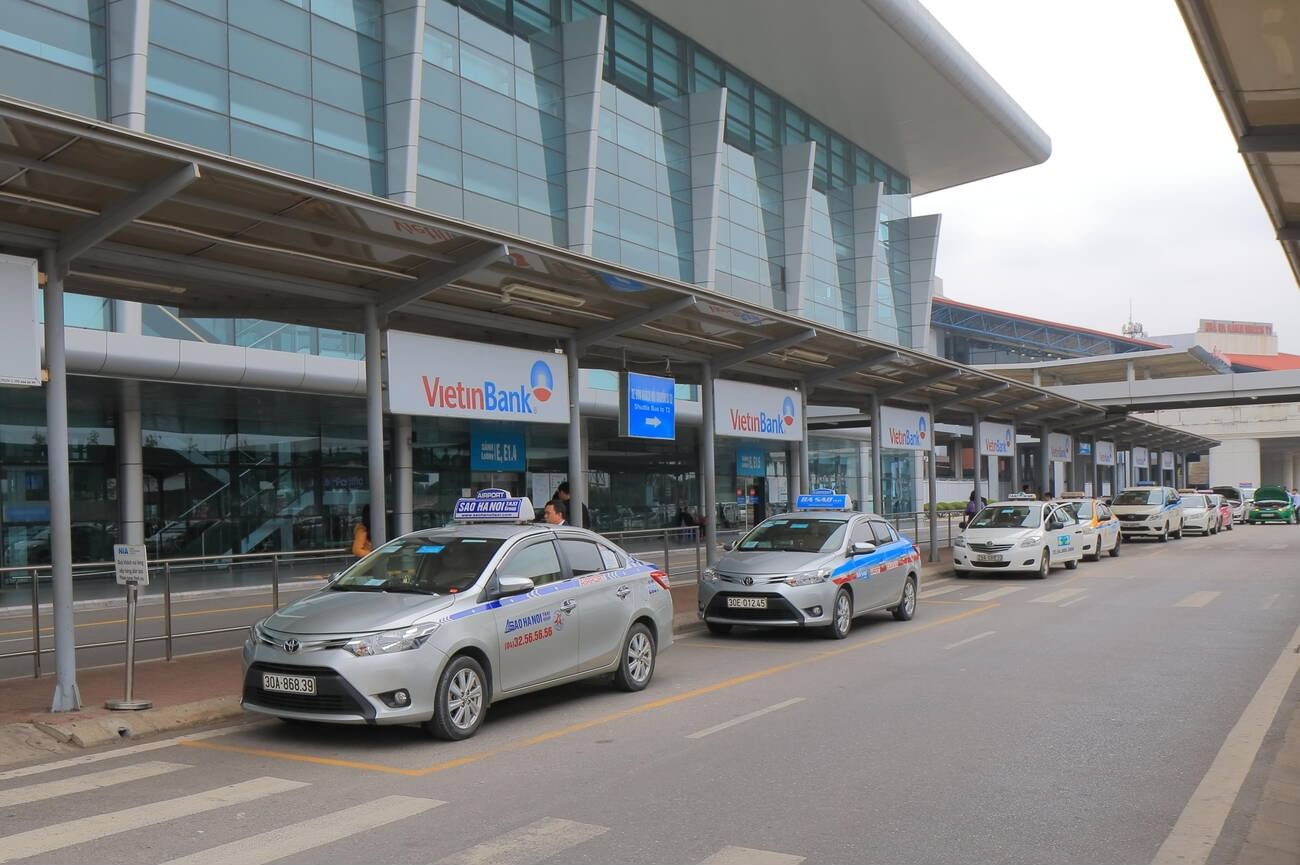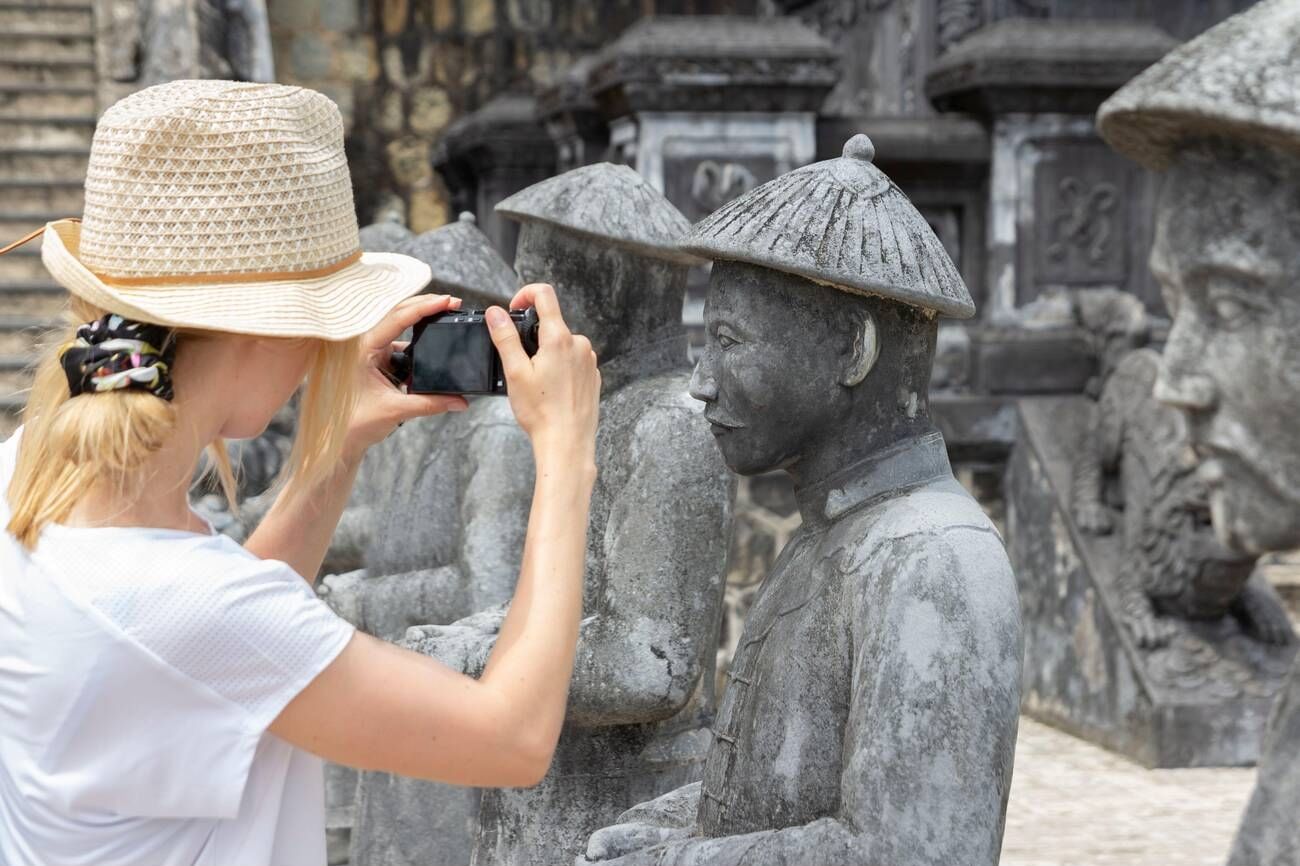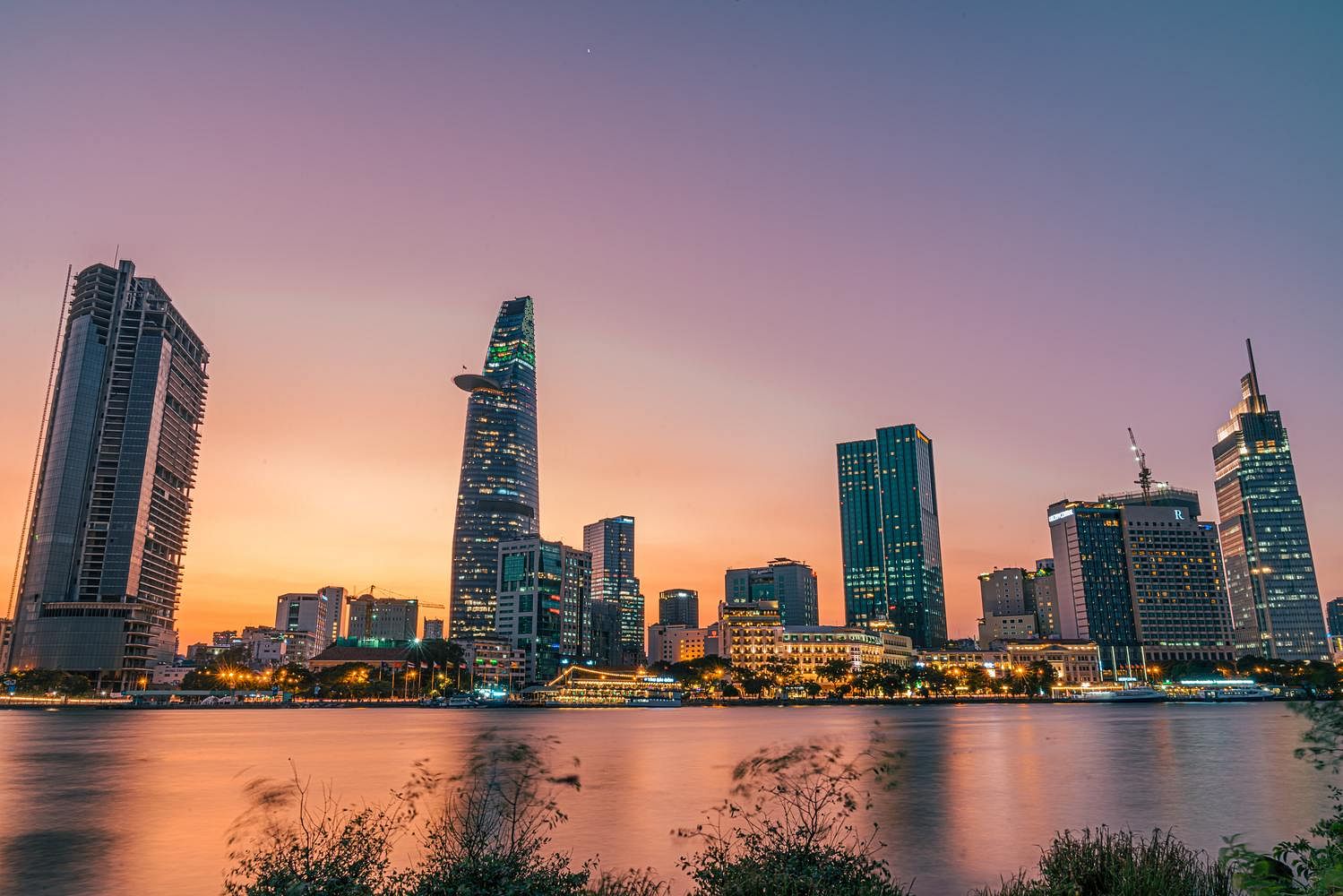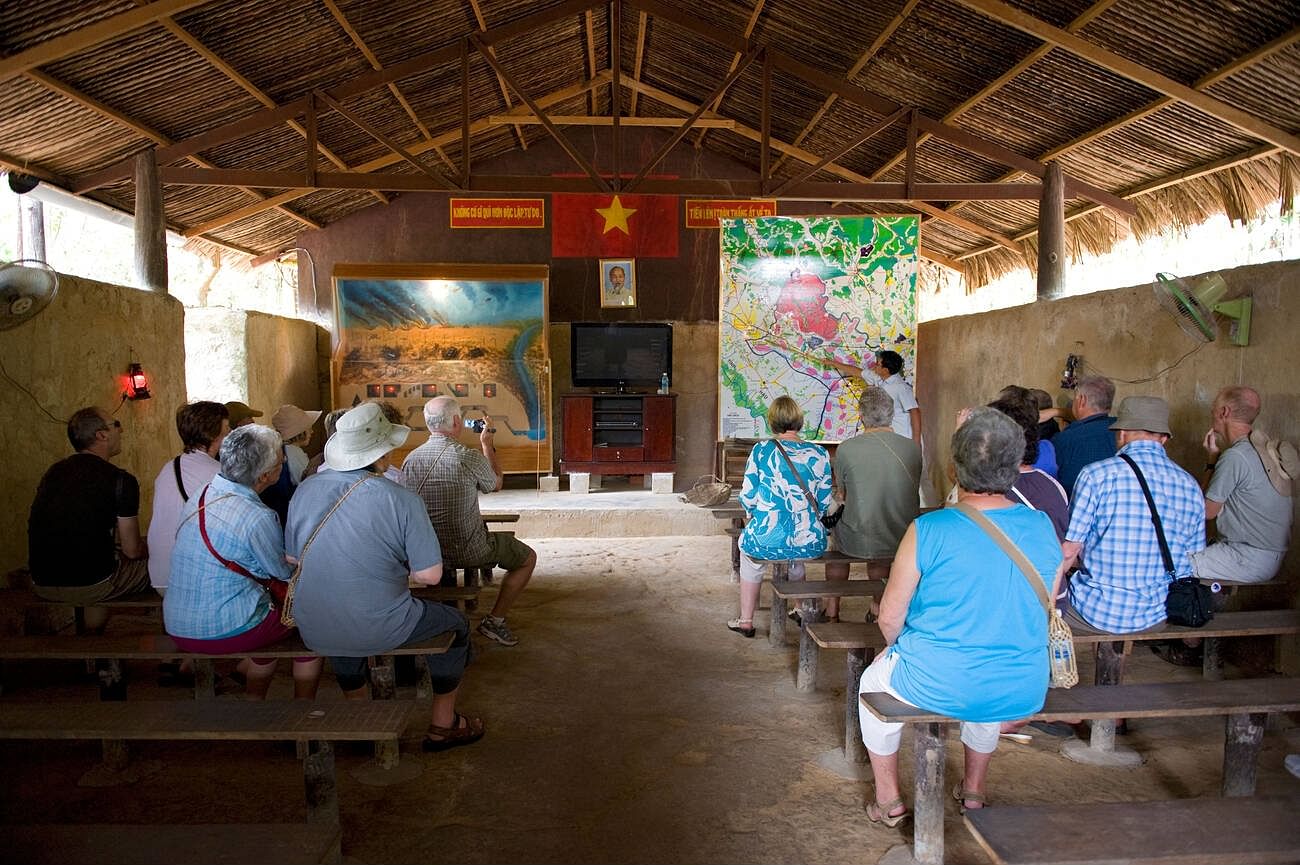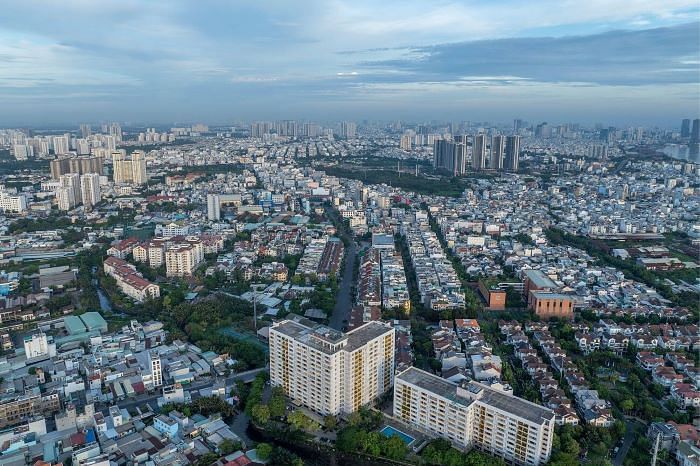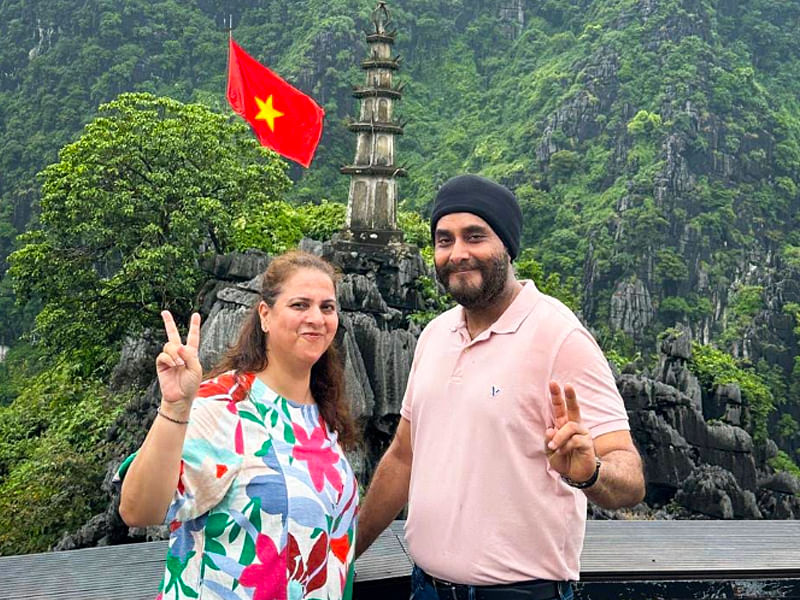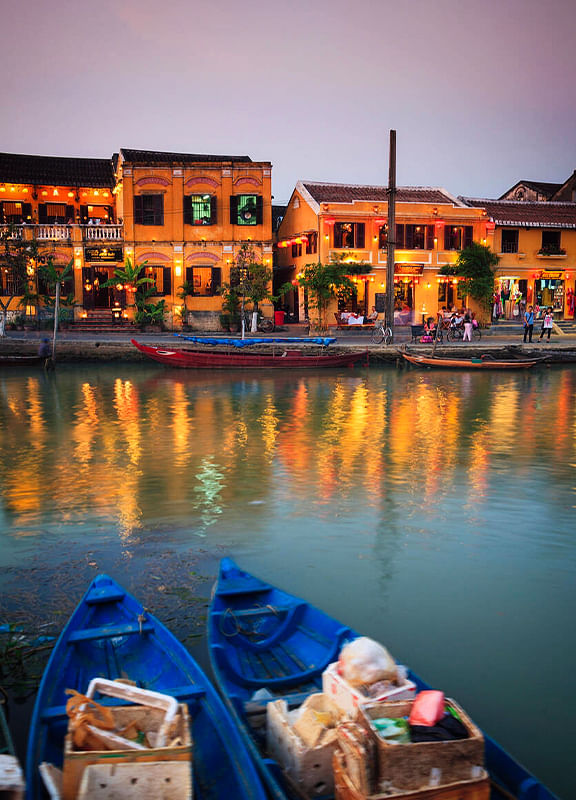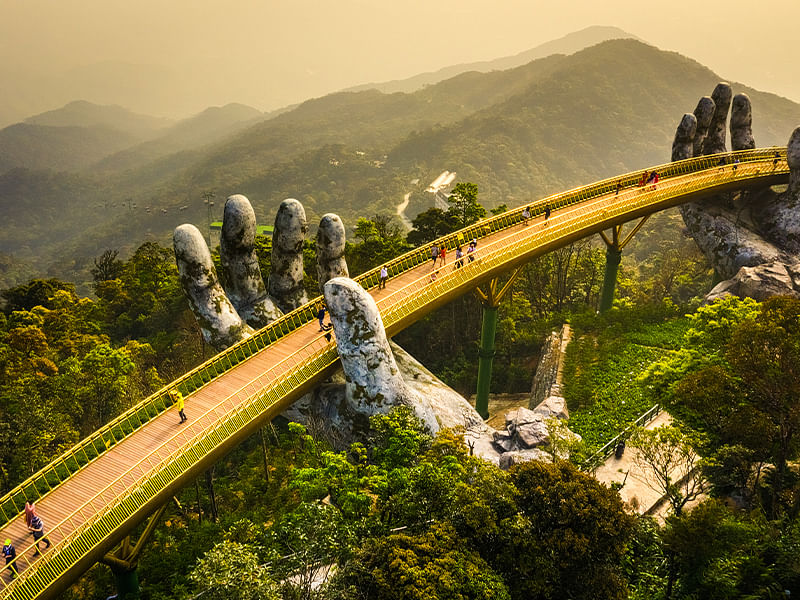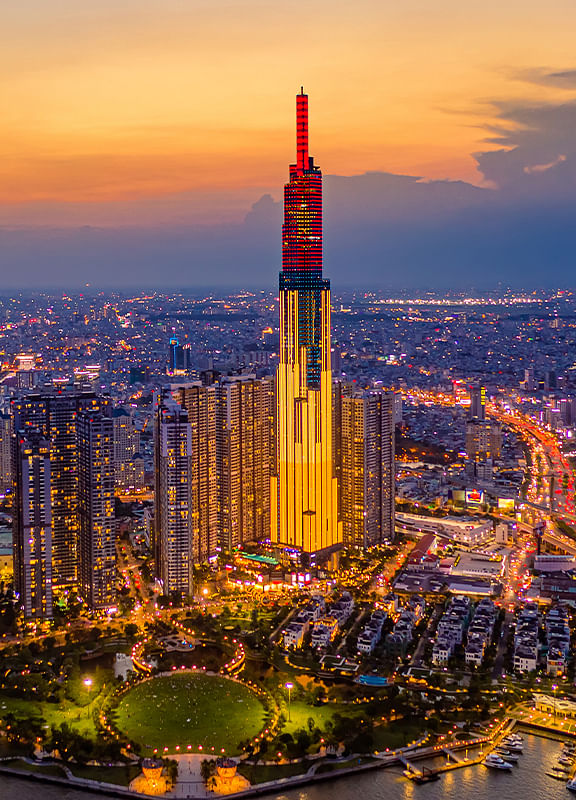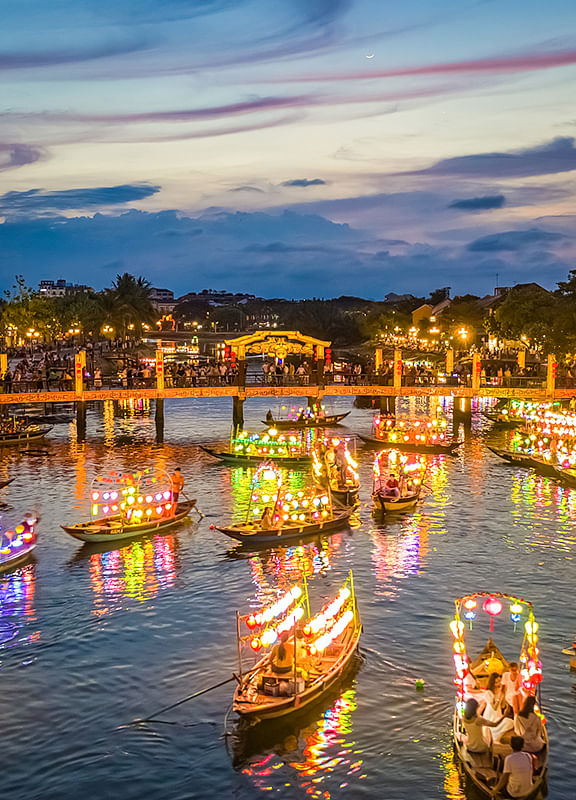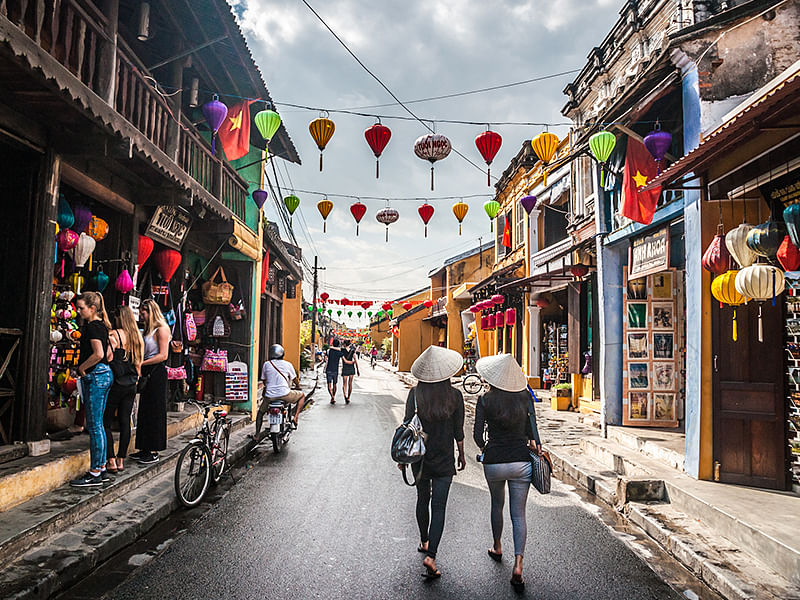Have you ever wondered what stories lie behind Vietnam’s most unique royal tombs? The Khai Dinh Tomb in Hue, Vietnam, is one of those amazing sites that immediately grabs attention. Often called the Tomb of Khai Dinh or Khai Dinh Mausoleum, this imperial resting place feels more like a grand, intricate museum than a simple tomb. Its architecture blends Vietnamese traditions with European influences, decorated with colourful mosaics and porcelain statues that sparkle in sunlight.
Travellers on Vietnam trip packages often find this blend of East and West absolutely breathtaking. Even WanderOn tours highlight this hilltop monument for its mosaic interiors and imposing steps. Known formally as the Mausoleum of Emperor Khai Dinh, it is a highlight of any Hue tour. Khai Dinh Tomb is even considered “one of the most worth-visiting Hue attractions”. It’s easy to see why: its design is so extravagant, with tiny statues and tiles telling tales of history. In this article, we’ll peek inside its gates and share why Khai Dinh Tomb is a must-see, setting the stage for your Vietnam adventure.
Location: Núi, Châu Chữ, quận Thuận Hóa, Thành phố Huế 530000, Vietnam
Timing: 7 am–5:30 pm (Mon- Sun)
History of Khai Dinh Mausoleum
Ever wondered what drove emperors to build such grand monuments that outlived them? The Khai Dinh Tomb in Hue, Vietnam, tells a story of ambition, artistry, and legacy. Construction of the Mausoleum of Emperor Khai Dinh began in 1920 and took 11 years to finish. Unlike earlier tombs that were spread across gardens and lakes, this one stands tall on Chau Chu Mountain, symbolising the emperor’s desire to be remembered in a unique way.
The history of Khai Dinh Mausoleum reflects the blending of East and West. Emperor Khai Dinh admired the European style, and his artisans combined it with traditional Vietnamese motifs. The result was a bold departure in royal architecture. Walking through its gates feels like stepping into a time when Vietnam was modernizing yet holding on to tradition. Today, it is not just a royal tomb but one of the best places to visit in Vietnam, attracting history lovers and curious travellers alike.
Architecture of Khai Dinh Tomb
The Khai Dinh Tomb is unlike any other royal monument in Hue. Often called the Tomb of Khai Dinh, it stands out for its bold fusion of Eastern and Western design. This mausoleum of Emperor Khai Dinh combines Vietnamese traditions with Chinese, French, Roman, Gothic, Hindu, and Buddhist elements—a reflection of the cultural exchanges of the early 20th century and the emperor’s unique tastes.
Materials and Construction
The materials used were equally distinctive. Khai Dinh sent emissaries to France, China, and Japan to collect the finest supplies. Built from reinforced concrete and steel, the Khai Dinh Mausoleum is decorated with porcelain, glass, and ceramic tiles. Its dark façade gives it a Gothic charm, while Vietnam’s largest dragon carvings add a sense of grandeur.
Key Features of the Complex
You can climb 127 steps to reach the tomb, beginning with the Tam Quan Gate, followed by the Nghi Môn and the open Bái Đình courtyard, where stone statues of mandarins, soldiers, and horses stand in silence. At the center lies Bi Đình pavilion with a towering stone stele inscribed with Khai Dinh’s achievements.
The Splendor of Thiên Định Palace
The highlight is the Thiên Định Palace at the summit. Every wall and ceiling glitters with glass and porcelain mosaics, while the “Nine Dragons Hidden in Clouds” mural stretches across the ceiling as one of the largest of its kind in Vietnam. Beneath a domed canopy rests a gilded bronze statue of Khai Dinh, cast in France, marking his eternal presence. Nearby, Khai Thanh Hall displays seasonal murals and ceiling paintings that mix Western perspective with Eastern symbolism.
Exploring this site is not just about history—it’s about marveling at one of the most artistic things to do in Vietnam, where architecture itself becomes a story of legacy and ambition.
Things to Do at Khai Dinh Tomb
Begin your visit by ascending the 127-step stairway, flanked by dragon railings. Each level reveals more of the Khai Dinh Tomb in Hue, Vietnam, leading you through gateways, courtyards, and statues. The climb itself feels like a symbolic journey into the emperor’s world, offering insight into his grandeur and ambition.
Explore the Courtyard Statues
At the Bái Đình courtyard, visitors encounter life-size stone statues of mandarins, soldiers, elephants, and horses. These guardians reflect both Vietnamese artistry and the influence of Chinese traditions. Walking among them provides a fascinating glimpse into the ceremonial role of imperial tombs and highlights the uniqueness of the Mausoleum of Emperor Khai Dinh.
Visit the Bi Đình Pavilion
The octagonal Bi Đình pavilion holds a 3.1-meter stone stele, inscribed with the emperor’s achievements. This inscription, written by Emperor Bảo Đại, is a key to understanding the history of Khai Dinh Mausoleum. It is not just a stone monument—it is a legacy carved in words, honouring Khai Dinh’s reign and character.
At the heart of the Khai Dinh Mausoleum, the Thiên Định Palace dazzles with mosaics made from porcelain and glass. Inside, the bronze statue of Khai Dinh, cast in France, rests beneath a domed canopy. The famous mural of “Nine Dragons Hidden in Clouds” makes this palace one of the most artistic places to visit near Khai Dinh Tomb.
Capture Panoramic Views of Hue
From the upper levels of the complex, sweeping views of Hue’s green hills and countryside unfold. It’s a serene reminder that the tomb is not only a monument but also part of the natural landscape. For travellers exploring things to do in Hue, these vistas offer the perfect opportunity for reflection and photography.
Know Before Your Visit to Khai Dinh Tomb
Best time to visit Khai Dinh Mausoleum
The best time to visit Khai Dinh Mausoleum is during Hue’s dry season, from January to September. Early mornings and late afternoons provide pleasant weather and fewer crowds, making exploration easier. This timing ensures you enjoy both the intricate architecture of Khai Dinh Tomb and the surrounding landscapes without discomfort from the midday heat.
Khai Dinh Tomb Entrance Fee and Timings
The Khai Dinh Tomb entrance fee and timings are straightforward for you. The cost of Hai Ding Tomb tickets is around 150,000 VND per person. The site remains open daily from 7:00 AM to 5:30 PM. You are encouraged to arrive early to avoid tour groups and maximize time exploring the detailed interiors of the Tomb of Khai Dinh.
How to Reach Khai Dinh Tomb from Hue City
- By Taxi/Grab: Taking a taxi or Grab is the fastest way to reach Khai Dinh Tomb from Hue City. The ride takes just 15–20 minutes, offering comfort, affordability, and convenience, especially for travelers with limited time or those avoiding traffic stress.
- Motorbike Rental: Renting a motorbike gives visitors flexibility to explore Hue at their own pace. The 9–10 km ride to the Mausoleum of Emperor Khai Dinh takes about 20 minutes, following scenic roads that showcase the countryside and surrounding landscapes.
- Organized Tours: Joining organized Hue tomb tours is a hassle-free option. These tours usually include the Tomb of Khai Dinh along with other royal mausoleums, providing transport, guides, and historical insights for a complete and informative cultural experience.
Travel Tips for Visiting Khai Dinh Mausoleum
- Wear comfortable footwear because you will need to climb 127 steps.
- Carry a bottle of water, especially during the dry season, as shade is limited.
- Take photos of the mosaics and murals but avoid touching the artwork.
- Dress modestly and keep your voice low inside the palace out of respect.
- Hire a guide to learn more about the history of Khai Dinh Mausoleum.
- Plan extra time to also see top attractions near Khai Dinh Tomb like Minh Mang or Tu Duc Tombs.
- You will need around 1-2 hours to visit Khai Ding Mausoleum.




